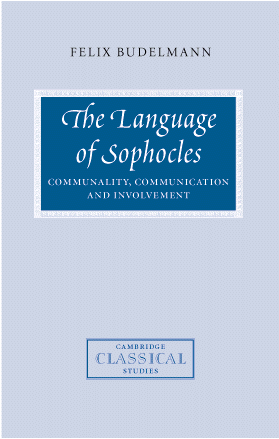Book contents
5 - The chorus: shared survival
Published online by Cambridge University Press: 15 August 2009
Summary
INTRODUCTION
Through its characteristic way of communicating, I have argued in the four preceding chapters, Sophoclean language can give spectators the sense of having something in front of them, something that is ‘there’, as I put it, something around which to gather. The sentences suggest a world beyond themselves, and entities such as myth, prophecies, characters and gods may seem as real as they are invisible. The language of Sophocles gives spectators something to share, getting them all involved, each in his or her own way. This is what I have called communality among the different.
A corresponding situation to that which I have tried to describe in those chapters can be found in the tragedies themselves. As the group that is the audience gathers around something that is there in the plays, so the group that is the chorus confronts the individual characters with whom they share the stage. All ancient Greek drama presents such a model of communal response. The model is particularly pronounced in tragedy, where the named characters are set against choruses formed by anonymous choreutai. These anonymous choruses are present during most of the action of the plays, watching, and to a degree interacting with, the individual characters. With few exceptions they speak and sing with one voice, whether as a choir in unison or represented by the coryphaeus.
Choruses and the model of communal response they present will be my theme in this last chapter.
- Type
- Chapter
- Information
- The Language of SophoclesCommunality, Communication and Involvement, pp. 195 - 272Publisher: Cambridge University PressPrint publication year: 1999



